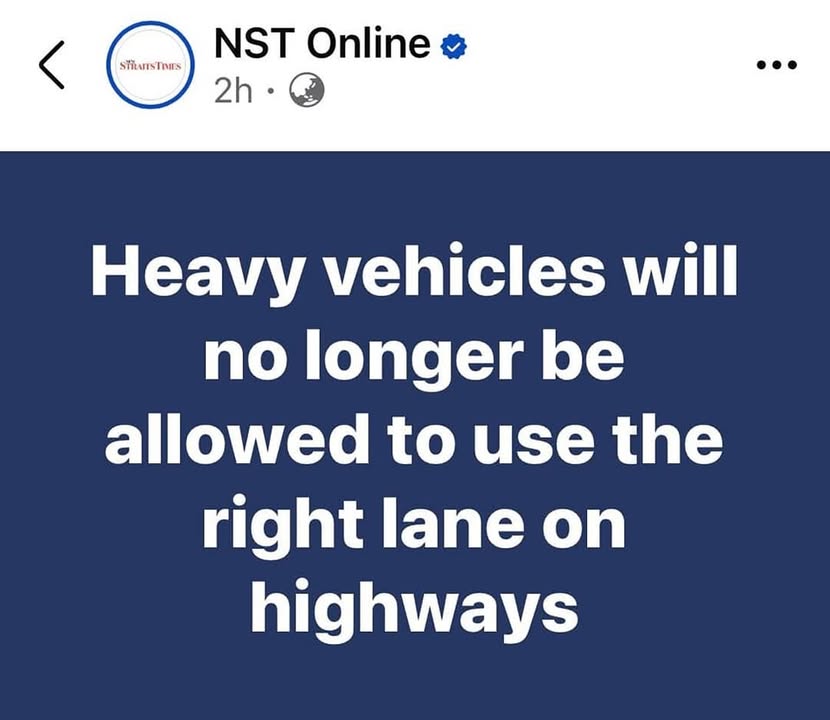
KUALA LUMPUR: Heavy vehicles will no longer be allowed to use the right lane on highways.
Instead, they must remain in the leftmost lane unless overtaking.
This is one of five improvements that the Transport Ministry (MOT) will enforce strictly for commercial vehicles, specifically lorries and buses.
Other regulatory enhancements included mandatory installation of speed control devices, Global Positioning System (GPS) tracking, high-speed weigh-in-motion (HS-WIM) detectors at 11 highway locations, and additional automated enforcement system (AES) cameras.
Ministry secretary-general Datuk Jana Santhiran Muniayan said the rule prohibiting buses and lorries from using the rightmost lane was gazetted in 2015, but had yet to be enforced.
"Under this rule, lorries and buses must stay in the left lane and are not allowed to speed. If they need to overtake, they may move to the second lane and then return to the left.
"However, they are strictly prohibited from using the third lane at any time. Therefore, we will resubmit this proposal to the minister to ensure its enforcement for heavy vehicles on highways," he said in an interview.
On speed control devices, he said all new lorries were already equipped with them.
However, owners of older vehicles had the option to install it themselves, as permitted by the Land Public Transport Agency (Apad).
"This device will limit heavy vehicle speeds to 80kph to 90kph to prevent accidents.
"This regulation has also been gazetted under existing laws, but it has not been enforced yet, and we want to see it implemented," he added.
Jana Santhiran said the GPS installation rule would take effect this month, allowing Apad to take action based on real-time monitoring of the system.
"For speed control devices and GPS, inspections will be conducted every six months at Puspakom to ensure compliance," he said.
If any traffic violations occur, authorities could immediately take action, including suspending or revoking the permits of lorry or bus companies.
The installation of HS-WIM at 11 highway locations was expected to be completed in the first quarter of next year to detect overloaded vehicles.
Currently, two locations were in the proof-of-concept (POC) phase, while the remaining nine were undergoing pilot projects, expected to be fully operational early next year.
"We are also collaborating with highway operators, as they have systems capable of detecting lorry loads at toll plazas. This technology will be linked to the Road Transport Department (JPJ) to enable automatic issuance of summonses," he said.
Additionally, the ministry would seek funding from the Finance Ministry to increase the number of AES cameras nationwide.
Jana Santhiran said these improvements resulted from a special task force established in early January to comprehensively address issues related to heavy vehicles.
Previously, several fatal accidents involving heavy vehicles were reported. One incident resulted in seven deaths, including a 2-year-old boy, after the front tyre of a lorry detached in the middle of the highway late last year.
On Jan 15, another accident at kilometre 226.5 of the North-South Expressway northbound lane involved four vehicles, including a lorry carrying soil, resulting in three deaths and six serious injuries.
Last year, authorities issued 45,216 summonses and opened investigation papers for overloading violations, with 55 vehicles impounded and eight seized.
However, in the first three months of this year, 3,144 summonses had been issued, with 104 vehicles impounded and 11 seized.